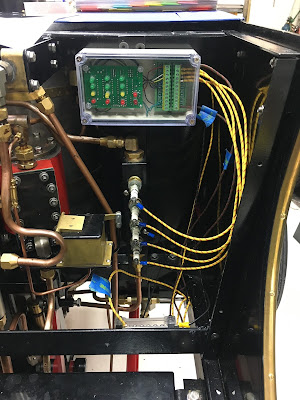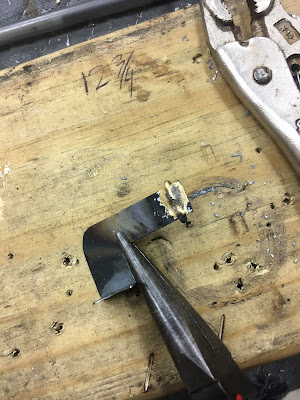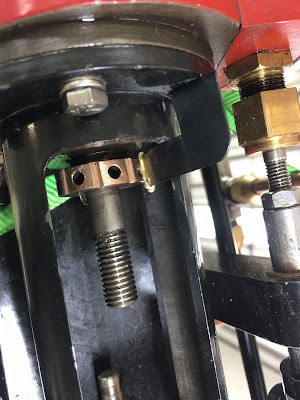I thought I would go over the start-up procedure that I use. One of the issues that causes a lot of time to start up the Lykamobile from a cold start is that the boiler becomes completely filled with water from the previous cool down operation. Because the system is not vented, a vacuum is created in the boiler as everything cools down, contracts and water is drawn from the supply tanks into the boiler. This means there is no head space in the boiler the next time you want to fire up the Lykamobile to create steam.
Previously I would open up the two valves on the boiler and wait and wait and wait for the water to slowly drain out of the boiler. This works, but what a pain.
So the following procedure is what I have "boiled" everything down to. (sorry for the pun). I decided to utilize the expansion of the water during the boiler heat-up by opening the valves and allowing the expansion of the water to push the excess water out of the boiler. But first the following is done:
1. Check the steam oil reservoirs. Fill if needed. Top off the water tanks.
2. Oil everything, water pumps, valve rods, piston guide blocks etc. In my case I open up my drip oiler to give everything a dose of oil.
3. Open up one of the blow down valves (right side) and also the piston/ valve box valve.
4. I place the drive in the neutral position.
5. Then I turn on the burner to heat up the boiler, after a few minutes water begins to be pushed out of the boiler through both opened valves. I depress the throttle some too to facilitate the withdrawal of water from the boiler. As you can see the boiler pressure is low at this point given that there are two valves opened.
6. As the pressure begins to rise a bit more, you can tell there is more steam versus water coming out of the boiler, but still a lot of water.
7. Once I see mostly steam coming from both valves I close off the boiler valve and still purge water/steam through the piston/ valve chest until I see mostly steam. This also warms up the pistons and valves helping to prevent condensation etc. inside the engine. I should make a caution ! Don't drain too much, you just want to lower the amount of water in the boiler some to provide the head space for the steam. The piston/ valve box valve exhibiting steam is an indication that you now have some head space in the boiler for steam generation.
8. Now I close the piston/ valve box valve and the boiler rises to its final operating pressure.
Now you are ready to go steaming! This takes about 15 minutes for me.

































































